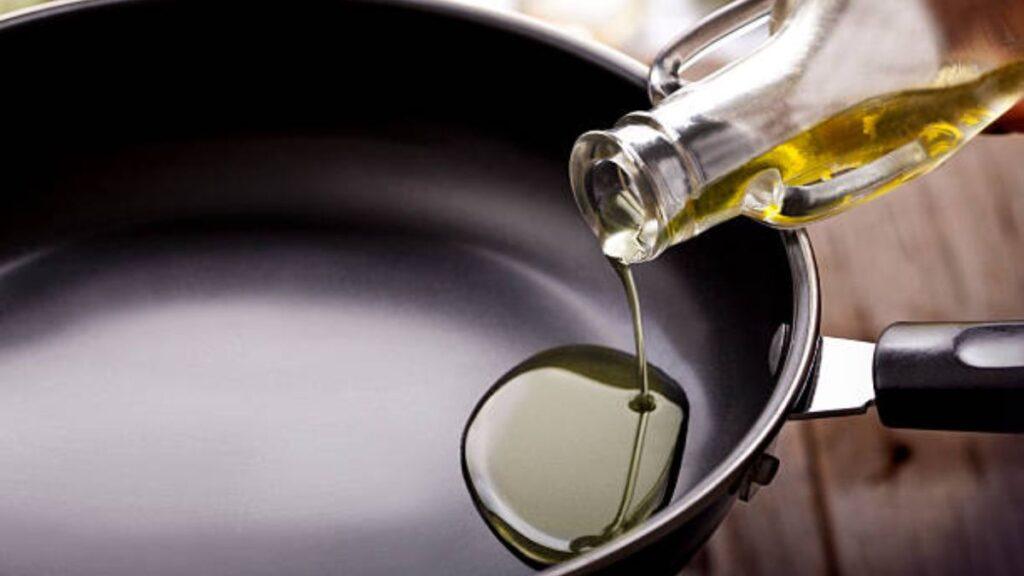How to identify fake cooking oil using FSSAI recommended tips

Tips to identify fake cooking oil.
Major Seizure in Ajmer Highlights the Issue
Nearly 18,000 liters of fake cooking oil was recently seized by the medical department in Ajmer, as reported by the Food Safety and Standards Authority of India (FSSAI) in a tweet. “About 18 thousand liters of misbranded edible oil was seized on Thursday Ajmer by the medical department in a campaign against food adulteration.
Here, edible oil was being prepared by using duplicates and different labels of various famous brands and by misbranding and adulteration,” the Medical & Health Department, Rajasthan tweeted on X (formerly Twitter).
This incident underscores the ongoing challenge of combating adulterated cooking oil in the market. The apex food regulator of the country has previously taken similar actions against such manufacturers. This raises an important question: what is fake cooking oil, and how can consumers identify whether the cooking oil they purchase is fake or genuine?
Understanding Fake Cooking Oil
Fake cooking oil refers to oils that are adulterated or impure. These oils may be mixed with cheaper oils like soybean or palm oil, repurposed industrial oils, or contain harmful chemicals to alter appearance or taste. Identifying fake cooking oil is crucial for health and economic reasons, as these adulterated oils can contain harmful substances and lack the nutritional benefits of genuine oils.
How to Identify Fake Cooking Oils
Simple Home Tests to Check Oil Quality
- Refrigeration Test: Place a small amount of oil in a clear container and refrigerate it. Pure oils will solidify, while adulterated oils may remain liquid.
- Freezer Test: Put the oil in the freezer. Pure olive oil, for example, should start to solidify within 30 minutes.
- Paper Test: Drop a small amount of oil on white paper and let it dry. Pure oil will leave an even, translucent spot without a greasy ring.
- Test Tube and Water Test: Take cooking oil in a test tube and add 4 ml of distilled water to it. Shake the test tube for a few seconds. Now take 2 ml of this liquid in another test tube and add 2 ml of concentrated HCL to this. There will be no color change if the oil is unadulterated; however, if the oil is adulterated, a red color will appear on the topmost layer of the oil.
- Coconut Oil Purity Test: To check the purity of coconut oil, take some oil in a container and keep it in the refrigerator with a temperature between 5-10 degrees. Wait for 60-90 minutes. Pure coconut oil will solidify, while adulterated oils will have a separate layer on the top due to the different freezing points of the oils.
- Tri-Ortho-Cresyl Phosphate Adulteration Test: To detect tri-ortho-cresyl phosphate adulteration in oil, take 2 ml of oil in a container and add a small cube of yellow butter to it. Unadulterated oil remains unchanged, while adulterated oil immediately changes color and turns red.
Sensory Checks
- Color and Clarity: Genuine oils have specific color and clarity. For example, olive oil is usually golden-green, while sunflower oil is pale yellow. Any unusual color or cloudiness can be a red flag.
- Smell: Genuine oils have characteristic smells. Olive oil, for instance, should have a fresh, fruity aroma. An off or rancid smell indicates spoilage or adulteration.
- Taste: Taste a small amount of the oil. It should have a clean, natural taste. Any bitterness or odd flavors could indicate contamination.
Here are some additional tips to help you identify fake cooking oils while purchasing:
- Check the Ingredient List: Genuine oils usually list a single type of oil. Multiple oils in the ingredient list may indicate blending.
- Nutritional Profile: Look for the expected nutritional profile of the oil.
- Certifications: Check for certifications like organic, non-GMO, or specific country standards.
- Expiry Date: Ensure the oil is within its expiry date, as expired oil can indicate poor quality.
- Price Check: If the price of the oil is significantly lower than the average market price, it could be an indication of adulteration.
- Seal Integrity: Ensure the bottle is sealed properly. Broken seals or loose caps can indicate tampering.
- Purchase from Reputable Brands: Buy oils from reputable brands that have established quality standards.
Conclusion
Knowing how to identify fake cooking oil is essential for maintaining health and avoiding economic losses. By using the tips and tests provided, consumers can make more informed choices and protect themselves from the dangers of adulterated cooking oils. Stay vigilant and prioritize quality when purchasing cooking oils.








